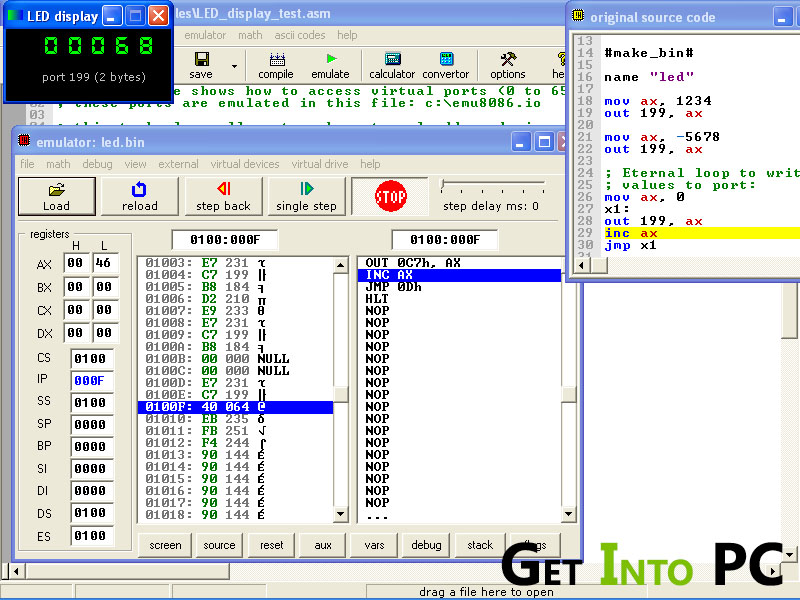
Write, Run & Share Assembly code online using OneCompiler's Assembly online compiler for free. It's one of the robust, feature-rich online compilers for Assembly language. Getting started with the OneCompiler's Assembly compiler is simple and pretty fast. The editor shows sample boilerplate code when you choose language as Assembly. See full list on salmanarif.bitbucket.io.
If you're reading this, you must be familiar with computer programming, maybe in a language like Java or Python. These languages encourage you to perform a lot work in very few lines of code. The code considered most clever accomplishes the most work with the least code, often with aid of built-in library functionality. Languages like this are considered 'high level languages'.
By contrast, assembly language has no built in facilities, and accomplishing simple tasks may be many lines of code. Assembly language is considered a 'low level language'. You have to adjust your thinking to 'what is the exact series of steps I have to do to accomplish this task'?
The most important thing to know about assembly language is that each line translates to one processor instruction.
Consider a C statement such as:
int a = b + 100;
In assembly language, you might have to do this in the following steps:

Load the address of the variable B into register #1
Load the contents of that memory address into register #2
Add the immediate value 0x64 to register #2
Load the address of variable A into register #1
Write the contents of register #2 to the address stored in register #1
In code it would look something like this:
Some things to note:
In a high level language, the compiler decides where in memory to put variables. When writing in assembly, you are responsible for deciding what every location in memory is going to be used for.
In most assembly languages, parenthesis indicate 'memory at this address'.
In most assembly languages, # is an indicator a literal number, also called an immediate value. For example in Line 1 above, the code will actually put a #0x1000 into register a1. If the code instead read
move.l a1, ($1000), I would expect a1 to get the contents of memory at location 0x1000.Each processor has a different assembly language, and it is difficult to move code from one processor to another.
This is not assembly language for a real processor, I made it up for this example.
One thing is similar between clever high level language programmers and assembly jockeys. Assembly programmers take pride in accomplishing a task as efficiently as possible and minimize the number of instructions used. The code for arcade games is usually written with every extra byte and cycle squeezed out of the code.
← Prev: logical-operationsNext: stacks →Post questions or comments on Twitter @realemulator101, or if you find issues in the code, file them onthe github repository.